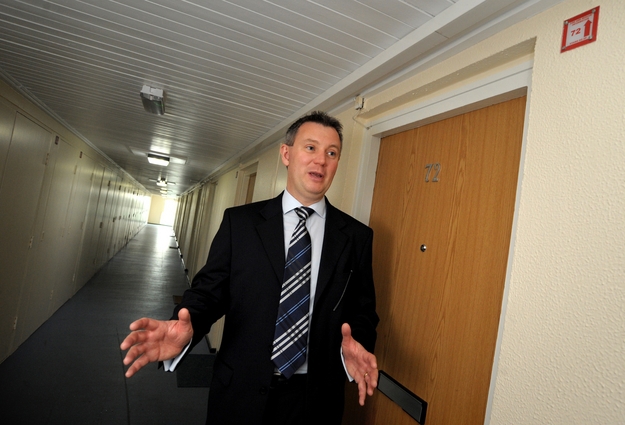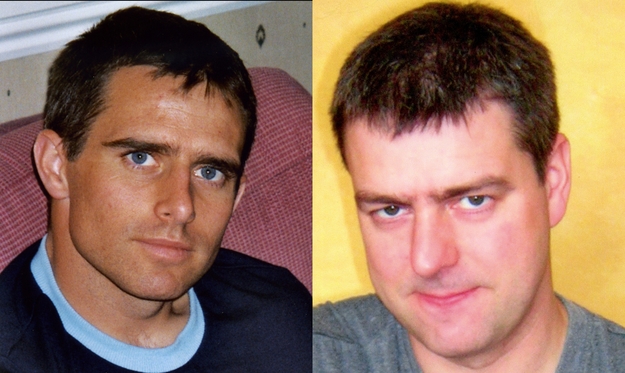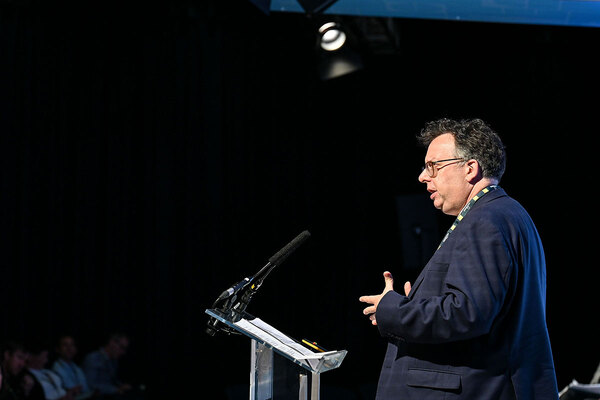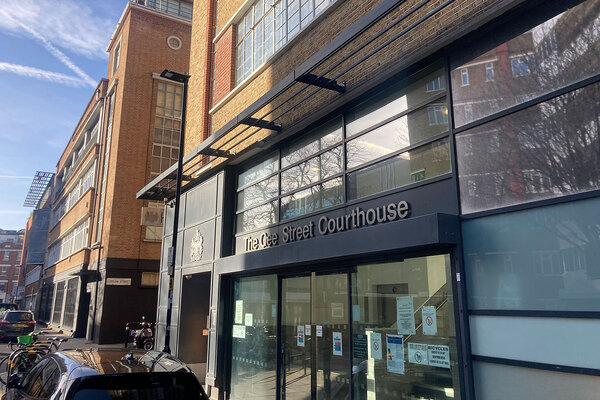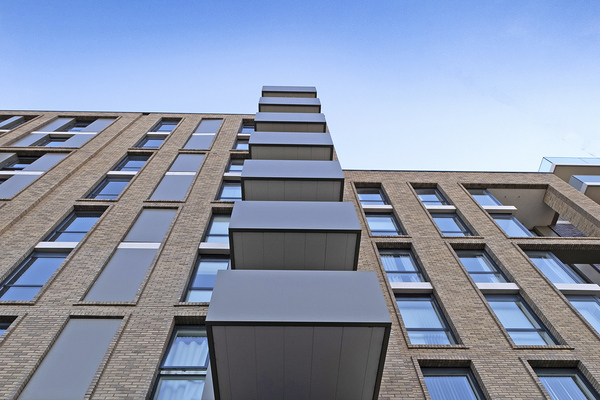Faulty towers?
A year ago two firefighters died in a blaze in a Southampton tower block. Nick Duxbury finds out if anything more could have been done to prevent their deaths.

Standing in front of door number 72 on the ninth floor of Shirley Towers, at a glance there is nothing to separate it from the hundreds of identical doors in any of the 19 tower blocks that dot the Southampton skyline.
The corridor walls have the gloss of fresh paint and the new doors along it are unmarked. Even when standing outside, looking up from below, the grey facade of the 15-storey Southampton Council-owned tower block is untarnished.
Only if you happened to glance at a small plastic sign on a fire escape door opposite the flat, might you notice the faded signature of smoke damage. And, if you sniffed carefully, you might imagine you could detect a hint of mustiness in the air. Because, though it may look no different now, Shirley Towers has a tragic history which separates it from other blocks.
On 3 April last year televisions across the nation broadcast images of flames roaring out of the window of number 72, pluming acrid black smoke into the night sky as the car park below flickered with the dancing bulbs of 20 fire trucks. The ominous glow of the blaze could be seen from miles around that night, and again the next day in newspaper pictures which showed flames licking up the side of the building.
Above the pictures, the headlines reported a tragedy that would rock the local Southampton community. Firefighters, Alan Bannon, 38, and James Shears, 35, both died as they battled against the flames.
Their deaths brought fire safety in tower blocks back into the spotlight after an initial storm of publicity following a fire in Lakanal House, Camberwell, south London, which killed six people the previous year. Southampton Council was at the centre of a media scrum, hungry for answers as to how the deaths could have happened.
Contained blaze
Now, more than a year on, Inside Housing stands on the ninth floor of Shirley Towers where the fire broke out to scrutinise what, if anything, the council could have done differently. And it quickly becomes apparent how skewed a story can become when it’s underpinned by tragedy.
Contrary to the impression given in the media at the time, the fire was restricted to just one apartment. In fact, to those who were elsewhere within Shirley Towers that night, the fire did not even appear serious.
‘I was standing just there showing firefighters to the door [of number 72] and answering their questions,’ explains Tom May, a 27-year-old warden who lives and works in the block, pointing at the entrance to the corridor - which, given the media reports, one might expect to have been engulfed in a raging inferno. Mr May recalls how he was able to stand and answer the firemen’s questions before evacuating residents on the floors above and below the flaming apartment.
‘It was strange,’ he says. ‘You couldn’t actually see the fire from this side [in the corridor]. The fire door [the flat’s front door] was hiding it - but of course everyone outside could see it. But I had no idea how bad it was - not until I went downstairs. Later, when I heard that there were people hurt, I assumed they were elderly residents - not two firemen.’
How the firefighters died remains a mystery. Within hours of the blaze being extinguished, the ninth floor was cordoned off as a police crime scene, and Hampshire Constabulary continues to investigate exactly what took place in the flat number 72. As the investigation is ongoing, Hampshire Fire and Rescue Service is unable to comment on the fire.
‘Something happened in that confined space that we may never know about,’ concludes Nick Cross, head of housing management at Southampton Council.
Nothing will be certain until the investigations are complete. But the fatalities appear to hide an uncomfortable contradiction: despite the deaths of the firemen, the blaze was contained within one apartment, where safety measures installed in preparation for such an outbreak worked. As a result, unlike at Lakanal House where the fire spread, no residents died in the Shirley Towers fire and most of the structural damage was caused by the 500 litres of water that was pumped into the building every minute for two hours by firefighters.
In fact, events at Shirley Towers appear to indicate that lessons from the blaze at Southwark Council-owned Lakanal House had been learned. Only one month prior to the tragedy, Shirley Towers underwent a fire risk assessment conducted by Hampshire Fire and Rescue Service. Plus the block was due for a decent homes face-lift that would have included further fire measures just one week later.
Safety measures
In the year following the fire, the block has undergone a Health and Safety Executive investigation, a police investigation, and the council has commissioned fire safety consultants Lawes Marsh to carry out an independent assessment of its fire safety practices. But a fundamental overhaul of the local authority’s fire protection procedures was not necessary.
Mr Cross describes the changes carried out by the council across its 19 tower blocks and 600 smaller blocks over the last year as a ‘tightening’ of what the council was doing already.
‘Although the fire risk assessment that we had done independently by consultants [Lawes Marsh] highlighted a number of “red concerns” such as ‘stopping up’ seals [so gaps are reduced and a fire doesn’t spread], safety lighting in stairwells and signage - in the scheme of things, none of them were a factor in anything to do with the fire,’ he states.
‘There was nothing highlighted that you would consider a fundamental risk to the building. Our view is that there were quite a lot of sensitivities [as a result of the deaths] around the building and the responses [from tenants and the media] reflected that sensitivity. If we can help other people learn then that’s fine; there are lots of other local authorities out there that aren’t as rigorous as us.’
As we walk along the corridors on the ninth floor of Shirley Towers, Mr Cross points to some of the additional measures that have been put in place since last April: fire retardant paint on the ceilings and more fire exit signs, for example. He explains how the wardens now carry out inspections of all fire doors to common areas. Perhaps the most radical change is the introduction of tenancy checks that enable the council to see what is happening behind the rows of closed doors.
‘For instance, in each flat there is an internal fire door on the middle landing, but in some flats people have taken those off,’ explains Mr Cross. ‘We need to check that the flat doors are still fire doors and haven’t been replaced by tenants. People do their own work within the properties such as adding electrics or knocking through walls.’
Sharon Chapman, a warden in the nearby Sturminster House tower block, is the face of the tenancy check pilots. So far she has carried out 149 checks and been surprised at how little she has found. ‘There haven’t been too many problems. One did have a padlock on their fire escape door. They couldn’t find the key. I think the tenant was concerned about security risks or her kids using it. There have been cases of people leaving clothes on their storage heaters and things like that.’
Resident responsibility
Now the council plans to roll these audits out across its stock. Ultimately, though, you can’t control tenant behaviour. ‘We can’t tell our tenants how to live - what we can do is provide support and advice to people who need it,’ says Mr Cross.
This point is demonstrated only a week before Inside Housing’s visit, when, rather mortifyingly for the council, there is another fire at Shirley Towers. On this occasion the fire is the result of a chip pan catching light. No one is hurt and it barely makes the papers. But despite the incident once again demonstrating that the procedures and measures Southampton Council has in place work, it highlights the lack of control landlords have over their tenants’ behaviour.
In the aftermath of the last year’s fire, residents, many of whom had been forced into emergency accommodation for three weeks, were rocked by the deaths of the two firemen. They knew who they blamed - and it wasn’t the council. Although it hasn’t been confirmed, the fire is thought to have been started by a curtain resting on a lamp. A glance at the comments left under online stories in the local press reveals a mass of hostility against the tenants who occupied the flat - most of which Mr Cross dismisses as being based on ‘unsubstantiated rumours’.
‘There was quite a lot of animosity towards them because of what happened,’ he says. ‘For their sense of security we thought we had better put them somewhere else to prevent repercussions.’
A year on, the ninth floor of Shirley Towers is indistinguishable from any other, and some of the anger felt by tenants has subsided. But the community is determined not to forget Mr Bannon and Mr Shears’ sacrifice. A tree has been planted at the entrance to the building and the block’s residents’ association is running a collection for a plaque to be put up in the foyer in their memory.
What Southampton Council has done since the fire
The local authority has implemented the following recommendations from an independent fire assessment:
- A monthly, rather than quarterly, test of the emergency lighting
- A review of fire stopping-gaps in the wall from electrical and pipe work. This led to alterations
- Increased emergency lighting at roof level and additional signage showing escape routes
- Upgrade of fire detection systems (despite previous compliance)
- Corridor windows, which had been sealed up to protect from vandals, have been secured with master-keyed padlocks, which emergency services can open without smashing them
- A review of keys required to access the block in all fire stations in the area
- Lockable boxes installed in all tower block offices containing information for fire crews and duplicate keys
- Re-testing of dry-riser water pipes, used by the fire service to pump water into the building
- Fire retardant paint used for decorating
- Front doors surveyed to ensure they comply with requirements to retain a fire in a property for 30 minutes
- Wardens carry out daily inspection of all fire doors to common areas. Any repairs to be carried out within 24 hours
- Carried out training exercises for firefighters in tower blocks with Hampshire Fire and Rescue Service
